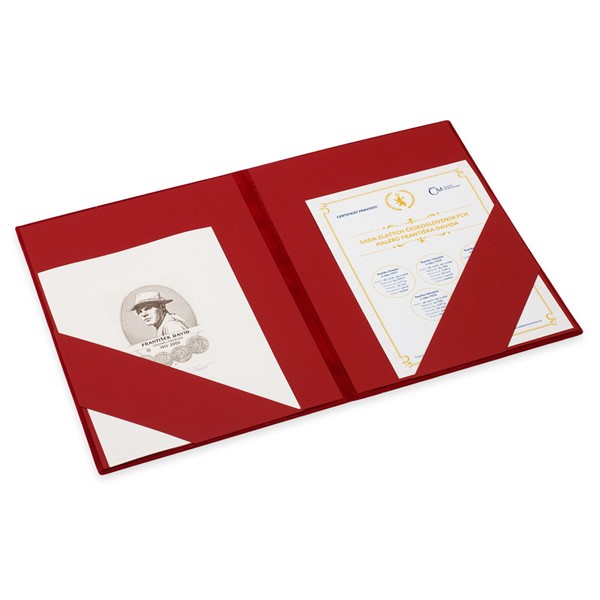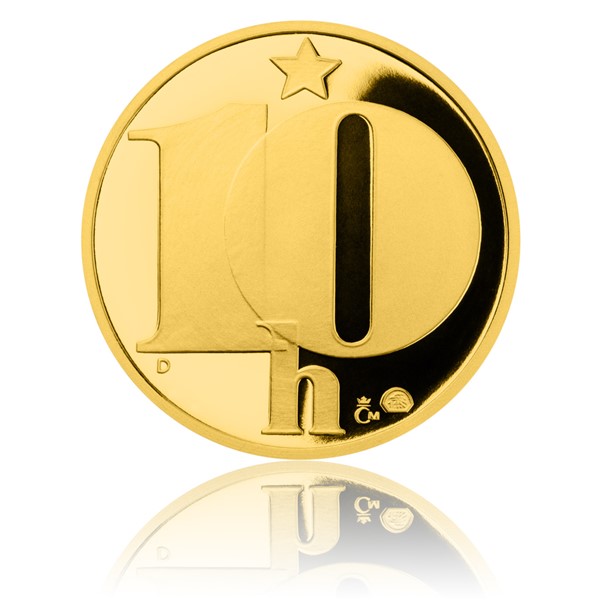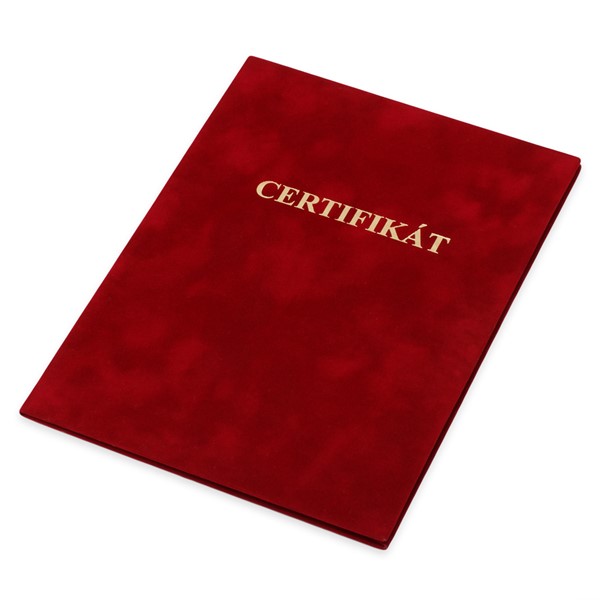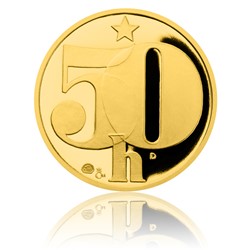Set of gold Czechoslovak coins designed by Frantisek David proof
Personal pickup at the store
Product description
A haléř, or also a halíř /cent/, is our lowest currency unit. Its history dates back to the 13th century when it was struck in Swabia, in Hall am Kocher, from which derived the Latin name denarius hallenses, German Haller. In the Czech Republic, where it appeared in the second half of the 14th century, it began to be called haléř Then it had a form of one-side-silver coin. The mintage was resumed later for Ferdinand I and later again by Maria Theresa in copper. After the reform of Franz Joseph I. in 1892, the penny becomes the smallest denomination of currency. The disintegration of the Austro-Hungarian Empire and the formation of the Republic brought the crown as a currency, which was divided into 100 cents. Heller coins were minted in eight historical nominals - 1, 2, 3, 5, 10, 20, 25 and 50 cents. The last of them, padesátihaléř alloy of aluminum and magnesium, were withdrawn from circulation in August of 2008.
The Czech Mint commemorates his masterpieces with an extraordinary set of replicas of coins with a nominal value of 5, 10, 20 and 50 cents of pure gold. Replicas are stored in a luxury wooden etui and adds a gold medal dedicated to the portrait of František David from the workshop of Jaroslav Bejvl. The issue is strictly limited to only 50 pieces - includes numbered graphic sheet and certificate of authenticity. Beautiful probe into the history of the Czechoslovak numismatics is a unique addition to the sophisticated collector's collection!
 čeština
čeština
 slovenčina
slovenčina
 english
english






























